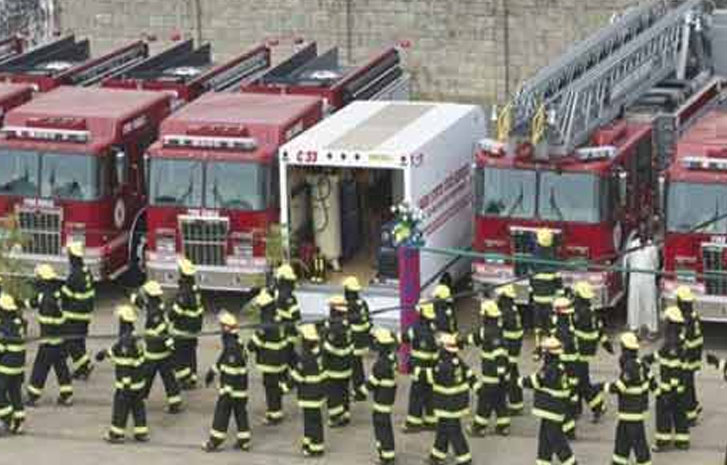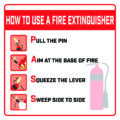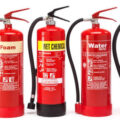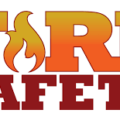In Nigeria, the Federal Fire Service has the statutory responsibility for rescue, fire prevention, mitigation, fire fighting as well as paramedical and information services. The Federal Fire Service was established in 1901 with the aim to combat all fire-related issues. It was formally named Lagos Police Fire Brigade until 1963. As at that time, it was working along with the Lagos Police.
The Federal Government reform of the Fire Services in the country in 2007 redefined the mandate of the Service as Regulation of the State and Private Fire Services, Prescription and monitoring of standards for the promotion of fire education, fire prevention, safety, mitigation and investigation, Ensuring effective discharge of the functions of the State Fire Services, Provision of policy direction for the Nation’s Fire Services, Ensuring the standardization of fire and rescue equipment manufactured or imported into Nigeria, Encouraging the establishment by the State Fire Services of adequate number of fire stations and fire posts, Establishing the National Fire Academy to meet the training requirements of fire fighters in the country and beyond and Coordination of national emergencies.
Training
After recruitment into the Federal Fire Service, individuals are trained on the rudiments of fire fighting. The Federal Fire service training school is an arm of the federal fire service department located in Lagos State with the responsibilities of training industrial workers as well as government employees on first aid fire fighting courses.
However, following the recent affiliation of the National Fire Academy, Sheda, to the Nigeria Defence Academy, Kaduna, for the purpose of running a post graduate programme in disaster management, the training school in Lagos has been converted to a mini campus of the National Fire Academy, Sheda.
Basic Fire service training is designed for training and competence in basic knowledge of the causes of fire, and prevention and firefighting techniques as well as risk minimization as well as actions to be taken in the event of a fire or similar emergency. Advance training usually covers the training in High Rise Fire Fighting Tactics, Casualty Care and Extrication, Fire Team Leader (JOIFF) and Fire Safety Management and Fire Risk Assessment amongst many others. New recruits into the federal fire service join the service after six (6) to eight (8) months of intensive physical and theoretical training in various disciplines. See How to Use Fire Extinguisher
Federal Fire Service Recruitment Requirements
- Applicant must be a Nigerian Citizen
- BSC/SSCE in the related field.
- Applicant must be willing to work with little or no supervision.
- Applicant should be at least 18years of age and not above 30 years of age.
- Candidate should be able to communicate in verbal and written English.
How to apply for Federal Fire Service Recruitment
To apply for the federal fire service recruitment, Interested and qualified candidates should: Visit the federal fire service Nigeria career recruitment portal at http://portal.fedfire.gov.ng/for detailed information and how to apply.
Standard Role of Fire Services
The Service was expected to focus on fighting fires, and the law constrained what they could do. Since then the role of the Fire Service has changed a great deal. As a result, under the new Act, Fire and rescue Authorities now have a range of statutory duties to Promote Fire Safety and To prepare for:
- fighting fires and protecting people and property from fires;
- Rescuing people from Road Traffic Accidents; and
- Dealing with other specific emergencies, such as flooding or terrorist attack.
In addition, all Fire and Rescue authorities will be able to do other things to respond to the particular needs of their communities and the risks they face.
Life Safety
Fire Service help to prevent the loss of life from fires. firefighters also administer first aid during medical emergencies which are much more prevalent than fires. They also rescue victims from other hazardous conditions like crashed or overturned vehicles.
Incident Stabilization
Firefighters also provide incident stabilization. Williams notes that some incidents can potentially escalate if not quickly contained. Some examples include forest fires, hazardous material releases, floods, and also terrorist attacks that might include explosions. In these situations, firefighters must find a way to confine and control these incidents. They work quickly and strategically to minimize the threat of danger and the level of damage caused by these incidents.
Property Conservation
In addition to saving lives and stabilizing situations, firefighters try to conserve property while battling blazes and performing other offensive or defensive measures, they work efficiently to ensure that their efforts don’t cause unnecessary damage to building structures and personal property, and they try to salvage as much property as possible. They also seek to limit environmental damage, especially in situations like wildfires.
Public Education
Firefighters also provide an important role in educating the public regarding fire and safety. They teach fire prevention and educating the public on how to respond in emergency situations. Firefighters also teach the community other valuable information, like how to “stop, drop and roll,” if an individual catches on fire, how to perform CPR and how to perform the Heimlich maneuver on someone who is choking.





